|
|
9th IUVSTA school
International Summer School on Physics at Nanoscale
16th - 21th June 2008
Devět Skal, Czech Republic
|
|
Stefan Maier
|
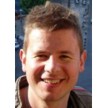
|
http://www.london-nano.com/content/lcndirectory/maierstefan/
My research interests centre on nanophotonics and plasmonics - the exploration of light
and light/matter interactions on the nanoscale -, and on metamaterials - the creation of
artificial media with optical properties not found in nature. Of particular interests are
nanostructured metallic systems, which allow the breaking of the diffraction barrier of
conventional optics, opening up new possibilies over the control of light, as well as the
creation of designer materials with fascinating electromagnetic properties such as negative
refractive indizes and tailored electric or magnetic resonances. Applications such as nanoscale
optical waveguides or highly integrated biological sensors are set to revolutionize 21st century
science and technology in the coming decades.
My introductory book on plasmonics:
The first edition of my introductory book on plasmonics has sold out, and Springer is currently
running a reprint. Copies should be available again from January on. Also, the Russian publishing
house Scientific Publishing Centre "Regular and chaotic dynamics" is preparing a translation, with a
print-run of 700 copies.
|
|
[Return to top]
|
|
Boris Altshuler
|

|
http://en.wikipedia.org/wiki/Boris_Altshuler
Boris Altshuler (born 27 January 1955 in Leningrad, USSR (now St. Petersburg, Russia)) is a professor
of physics at Columbia University. His specialty is theoretical condensed matter physics.
Altshuler received his diploma in physics from Leningrad State University in 1976. He continued on
at the Leningrad Institute for Nuclear Physics, where he was awarded his Ph.D. in physics in 1979.
Altshuler stayed at the institute for the next ten years as a research fellow.
In 1989, Altshuler joined the faculty of the Massachusetts Institute of Technology. While there,
he received the Hewlett-Packard Europhysics Prize (now called the Agilent Physics Prize) and became
a fellow of the American Physical Society.
Altshuler left MIT in 1996 to take a professorship at Princeton University. While there, he became
affiliated with NEC Laboratories-America. Recently, Altshuler has joined the faculty of Columbia
and continues to work with the NEC Labs.
Awards and Honors:
• 1993 Hewlett-Packard Europhysics Prize
• 1993 Became a fellow of the American Physical Society
• 1996 Elected to the American Academy of Arts and Sciences
• 1998 Recipient of the Heinz R. Pagels Human Rights of Scientists Award.
• 2002 Elected to the National Academy of Sciences
• 2003 Oliver E. Buckley Prize of the American Physical Society
|
|
[Return to top]
|
|
Jaime Gomez Rivas
|
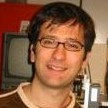
|
http://www.nanowirephotonics.com/people.html
Head of the groupd Nanowire Photonics
Center for Nanophotonics, FOM-Institute AMOLF, Philips Research Laboratories Eindhoven
Research interests:
• III-V semiconductor nanowires as building blocks for nanoscale optoelectronic devices.
• Complex metallic structuctures for enhanced, polarized and directional emission of light sources coupled to surface plasmon polaritons and particle plasmons.
|
|
[Return to top]
|
|
Peter Varga
|
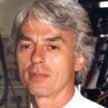
|
http://www.tuwien.ac.at/dienstleister/pr_und_kommunikation/aktuelles/downloads/pa_422007/
Head of Surface Physics - Arbeitsgruppe Oberflächenphysik
Institut für Allgemeine Physik, Technische Universität Wien
Research interests:
• Ultra-thin films of oxides and metals; study of growth modes, structure and interface structures on the atomic scale.
• Determination of the magnetic structure of ultra-thin films by using SMOKE (Surface magnetooptical Kerr effect) and comparison with the crystallographic structure determined by STM.
• Scanning Tunneling Microscopy (STM) of multicomponent surfaces between 5 K and room temperature with chemical contrast on the atomic scale.
• Quantitative Low Energy Electron Diffraction (LEED) (I/V-curves; full dynamic LEED calculations) as a complementary method to STM for determination of the crystallographic structure as well as the chemical composition of the near-surface layers.
|
|
[Return to top]
|
|
Georg Kresse
|
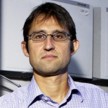
|
http://cms.mpi.univie.ac.at/kresse/Welcome.html
Since approximately 1991, I am devoting most of my time to the development of ab initio density functional
methods. My continued efforts to improve the numerical algorithms have resulted in a stable and versatile
package called VASP (Vienna Ab initio Simulation Package), which is presently used by about 500 academic
institutions and roughly 50 industrial licensees. Simultaneously, a database of PAW potentials covering
the entire Periodic Table has been developed. This database is unique in terms of precision, robustness
and completeness and allows even casual users of density functional methods to perform calculations for
most compounds and structures without worrying about basis sets or pseudopotential details.
Awards:
November 1997 Erich Schmid Prize of the Austrian Academy of Science
September 2001 Ludwig Boltzmann Prize of the Austrian Physical Scociety
Juni 2003 Start Preis des Fonds zur Förderung der wissenschaftlichen Forschung (FWF)
September 2003 Hellman Preis der Internationalen Arbeitsgemeinschaft Theoretische Chemie
|
|
[Return to top]
|
|
Laurent Ranno
|
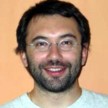
|
http://lab-neel.grenoble.cnrs.fr/INDIVIDUS/ranno.html
Magnetic thin films and nanostructures
Group Magnetic Thin Films and Nanostructures is a research group in Laboratoire Louis Néel dedicated to the fabrication and study of magnetic thin films, patterned and self-organized nanostructures, as well as nanostructured materials. We are primarily interested in model systems to unravel details of processes such as Magnetization Reversal, Magneto-Resistance, Exchange-Coupling, Surface/Interface Anisotropy, etc.
|
|
[Return to top]
|
|
Joerg Wunderlich
|
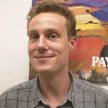
|
http://www.hitachi.com/rev/field/research_development/2062018_33507.html
http://www.hitachi.com/New/cnews/050201.html
Advanced Electronic Devices, Hitachi Cambridge Laboratory
Overview:
The continued march of miniaturization in electronics provides
a constant challenge for designing future technologies. For several decades,
it has been realized that quantum mechanics plays a significant part in the
operation of commercial semiconductor devices. The Hitachi Cambridge
Laboratory was established to create new device concepts based on quantum
mechanical principles, and conducts this research in collaboration with
Hitachi’s worldwide network of research laboratories. Such nanoelectronic
devices are expected to be the basic building blocks of future microprocessors,
memory chips and HDDs.
|
|
[Return to top]
|
|
Klaus Lips
|

|
http://www.hmi.de/pubbin/vkart.pl?v=odo
http://www.hmi.de/people/lips/
Deputy Head of the Silicon Photovoltaics Departmenty
My research activities are concerned with the electronic properties of semiconductors and organic materials used for device applications such as solar cells, displays, lasers, or even quantum computers (very hype). In particular, my group and I try to identify the defects of a given material, and their role in recombination.
The main methods that we use for such studies are:
• Continuous-wave electron spin resonance (cw ESR) and time-domain ESR
• Electrically and optically detected magnetic resonance (EDMR and ODMR) Detektion in both continuous-wave and time-domain
• Photoluminescence
For (fun) details, presentations, and publications please refer to my personal homepage.
|
|
[Return to top]
|
|
Klaus Ensslin
|
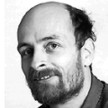
|
http://www.nanophys.ethz.ch/
Klaus Ensslin has been Professor of Solid-State Physics at the ETH Zurich since October 1995.
Born in Stuttgart, Germany, Klaus Ensslin studied physics at the University of Munich and at the ETH Zurich. After completing his doctoral dissertation at the Max Planck Institute in Stuttgart, he was a postdoc at the University of California in Santa Barbara, USA. From April 1991 until September 1995 he worked at the University of Munich. His habilitation thesis was awarded a prize from the University of Munich. In 1995 he received the Gerhard Hess prize of the German Science Foundation promoting outstanding young researchers.
The primary research interest of Klaus Ensslin lies:
in the fabrication, in experimental investigation and understanding of semiconductor nanostructures.
|
|
[Return to top]
|
|
Dominique Vuillaume
|
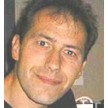
|
http://www.iemn.univ-lille1.fr/sites_perso/vuillaume/MolElec.html
Dominique VUILLAUME (Electronics Engineer degree, 1981; Ph-D in solid-state Physics,
1984: Habilitation diploma in solid-state Physics, 1992) is CNRS research director at the Institute for
Electronics, Microelectronics and Nanotechnology (IEMN) located at the university of Lille. He is head of
the « Molecular Nanostructures & Devices » research group at IEMN. He was scientific advisor for industrial
compagnies (Bull R&D center) and he is presently scientific advisor at the CEA "Chimtronique" research program.
His research interests (1984-1992) covered Physics and characterization of point defects in semiconductors and
MIS devices, Physics and reliability of thin insulating films, hot-carrier effects in MOSFET's. Since 1992, he
is now engaged in the study of the physical and electrical properties of organized organic monolayers
(self-assembled monolayers), and more generally in the field of Molecular Electronics. He is involved in the
study of the electrical transport through organic monolayers and of the relationship with their structural
properties; in the studies of monolayers of functionalized molecules; in the electrical transport through
organic unimolecular devices; in the applications of organic monolayers and organic molecules to nanometer-scale
devices and molecular-scale electronics. He is the author or co-author of more than 130 scientific (peer-reviewed)
papers in these fields, 36 invited conferences.
Main publications in the field of molecular nanostructures & devices:
1/f tunnel current noise through Si-bound alkyl monolayers.
N. CLEMENT, S. PLEUTIN, O. SEITZ, S. LENFANT, D. CAHEN & D. VUILLAUME. Phys. Rev. B 76, 205407 (2007).
A low-operating-voltage monolayer organic transistor made of a self-assembled bi-functional molecule.
M. MOTTAGHI, P. LANG, F. RODRIGUEZ, A. RUMYANTSEVA, A. YASSER, G. HOROWITZ, S. LENFANT, D. TONDELIER & D. VUILLAUME. Adv. Func. Mater. 17, 597-604 (2007).
Directed assembly for carbon nanotube device fabrication.
J.P. BOURGOIN, J. BORGHETTI, P. CHENEVIER, V. DERYCKE, A. FILORAMO, L. GOUX, M.F. GOFFMAN, S. LYONNAIS, K. NGUYEN, G. ROBERT, S. STREIFF, J.M. BETHOUX, H. HAPPY, G. DAMBRINE, S. LENFANT & D. VUILLAUME. IEDM Tech. Dig., 1-4244-0439-8 (2006).
Optoelectronic switch and memory devices based on polymer functionalized carbon nanotubes.
J. BORGHETTI, V. DERYCKE, S. LENFANT, P. CHENEVIER, A. FILORAMO, M. GOFFMAN, D. VUILLAUME & J.P. BOURGOIN. Adv. Mater. 18, 2535-2540 (2006).
Electron transport through rectifying self-assembled monolayer diodes on silicon : Fermi level pinning at the molecule-metal interface.
S. LENFANT, D. GUERIN, F. TRAN VAN, C. CHEVROT, S. PALACIN, J.P. BOURGOIN, O. BOULOUSSA, F. RONDELEZ & D. VUILLAUME. J. Phys. Chem. B, 110(28), 13947-13958 (2006).
Tunnel current in self-assembled monolayers of 3-mercaptopropyltrimethoxysilane.
D.K. ASWAL, S. LENFANT, D. GUERIN, J.V. YAKHMI & D. VUILLAUME. Small 1(7), 725-729 (2005).
Ambipolar charge injection and transport in a single pentacene monolayer island.
T. HEIM, K. LMIMOUNI & D. VUILLAUME. Nano Letters 4(11), 2145-2150 (2004).
1-octadecene monolayers on Si(111) hydrogen-terminated surfaces : effect of substrate doping.
C. MIRAMOND & D. VUILLAUME. J. Appl. Phys. 96(3), 1529-1536 (2004).
Molecular rectifying diodes from self-assembly on silicon.
S. LENFANT , C. KRZEMINSKI, C. DELERUE, G. ALLAN & D. VUILLAUME. Nano Letters 3(6), 741-746 (2003).
Theory of electrical rectification in a molecular monolayer.
C. KRZEMINSKI, C. DELERUE, G. ALLAN, D. VUILLAUME & R.M. METZGER. Phys. Rev. B. 64, 085405 (2001).
Low-voltage, 30 nm channel length, organic transistors with a self-assembled monolayer as gate insulating films.
J. COLLET, O. THARAUD, A. CHAPOTON, D. VUILLAUME. Appl. Phys. Lett. 76(14), 1941-1943 (2000).
Electronic structure of alkylsiloxane self-assembled monolayer-silicon heterostructure.
D. VUILLAUME, C. BOULAS, J. COLLET, G. ALLAN & C. DELERUE. Phys. Rev. B 58(24), 16491-16498 (1998).
A nano-FET with an organic self-assembled monolayer as gate insulator.
J. COLLET& D. VUILLAUME. Appl. Phys. Lett. 73(18), 2681-2683 (1998).
Unimolecular electrical rectification in hexadecylquinolinium tricyanoquinodimethanide.
R.M. METZGER, B. CHEN, U. HOPFNER, M.V. LAKSHMIKANTHAM, D. VUILLAUME, T. KAWAI, X. WU, H. TACHIBANA, T.V. HUGHES, H. SAKURAI, J.W. BALDWIN, C. HOSCH, M.P. CAVA, L. BREHMER, G.J. ASHWELL. J. Am. Chem. Soc. 119(43), 10455 (1997).
Suppresion of charge carrier tunneling through organic self-assembled monolayers.
C. BOULAS, J. DAVIDOVITS, F. RONDELEZ & D. VUILLAUME. Phys. Rev. Lett. 76(25), 4797 (1996).
|
|
[Return to top]
|
|
Arvind Shah
|

|
http://www3.unine.ch/members/arvind.shah
In September 2007, Professor Arvind Shah was awarded the prestigious Becquerel
Prize for Outstanding Merits in Photovoltaics at the 22nd European Photovoltaic Solar Energy Conference
and Exhibition (Milan, September 2007). As Professor for Electronics at the Institute of Microtechnology
(IMT) at the University of Neuchatel, Switzerland, Arvind Shah started research into PV in the mid 1980s,
and later founded the IMT Photovoltaics Laboratory.
Among the laboratory's innovations was (1987) the VHF (Very High Frequency)
deposition technique for low-cost, high-rate deposition of amorphous silicon, which reduces fabrication
times by a factor of 3. From 1993-1996 his team was instrumental in introducing microcrystalline
silicon cells as new photoactive material, and rapidly obtaining conversion efficiencies higher than 5%,
by applying the VHF plasma deposition technique and by reducing the oxygen content in the material.
(At the moment single-junction microcrystalline silicon solar cells reach efficiencies which are as high
as 9 to 10 %).
In 1994 the IMT Photovoltaics laboratory demonstrated the concept of the
microcrystalline/amorphous silicon tandem solar cell. This 'micromorph' concept leads to stabilized cell efficiencies
of 11 to 12%; it has become on
one of the main avenues followed at present by PV Industries in their attempt to establish low-cost solar
module production.
|
|
[Return to top]
|
|
René A. Janssen
|
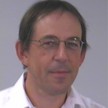
|
http://w3.chem.tue.nl/nl/people_pages/?script=showemp.php&pid=189
René Janssen is full professor in physical organic chemistry. He received his Ph.D.
in 1987 at the Eindhoven University of Technology for a thesis on electron spin resonance and quantum chemical
calculations of organic radicals in single crystals. He was appointed as a lecturer at the TU/e in 1984, as a
senior lecturer in 1991, and as full professor in 2000. In 1993 en 1994 he joined the group of Alan J. Heeger at
the University of California Santa Barbara as associate researcher. René Janssen has been visiting professor at
the University of Angers in France since 2000. The research of his group focuses on functional conjugated
molecules, macromolecules, nanostructures, and materials that may find application in advanced technological
applications. Synthetic organic and polymer chemistry are combined with advanced optical spectroscopy,
electrochemistry, morphological characterization and the preparation of prototype devices to accomplish these
goals. In 1999 René Janssen received the ‘Pionier’ award from the Chemistry Science Branch of the Netherlands
Organization for Scientific Research and in 2000 he was co-recipient of the René Descartes Prize from the European
Commission for European for outstanding collaborative research.
Main publications in the field of molecular nanostructures & devices:
J.C. Hummelen, R.A.J. Janssen, J. Knol, M.M. Wienk, J.M. Kroon, W.J.H. Verhees, Organic material photodiode, Patent: EP1447860 (2004)
|
|
[Return to top]
|
|
Arie Zaban
|

|
Arie Zaban was born in Israel in 1961. He earned a B.Sc. in Chemistry (summa cum laude)
and a Ph.D. in Electrochemistry (with highest distinction) at Bar-Ilan University (1987-1995).
After a 2 year postdoctoral stint at the US National Renewable Energy Laboratory (Denver, CO),
he was appointed to the senior faculty at Bar-Ilan, where he is currently a Full Professor of
Chemistry and Director of the Bar Ilan Institute for Nanotechnology and Advanced Materials.
Presently, Zaban also serves as the Chairman of the Israel Vacuum Society.
Prof. Zaban has published over 90 papers in refereed journals and has 8 patents. He has been
awarded several prizes and fellowships such as the Israel Chemical Society Prize for
Outstanding Young Scientist, the Michael Landau Research Price, a Rothschild Fellowship,
and a Levi Eshkol Scholarship.
His research interests are in the fields of photo-electrochemistry and materials science,
with a focus on renewable energy resources.
Current activities:
•Development of dye sensitized solar cells, plastic solar cells and photocatalytic purification systems
•New approaches to light harvesting and utilization in photovoltaic systems mainly aimed at efficient utilization of the solar spectrum
•Basic understanding of the photophysical processes involved in photo-electrochemical systems
|
|
[Return to top]
|
|
Timothy Schmidt
|
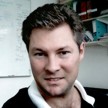
|
http://www.chem.usyd.edu.au/~schmidtt
Presently visiting researcher at Laboratoire Photophysique Moleculaire, Orsay, France.
Career Profile:
• BSc (Hons 1M), University of Sydney, 1997.
• PhD, Churchill College, University of Cambridge, United Kingdom, 2001.
• Postdoctoral Researcher, Institut für Physikalische Chemie der Universität Basel, Switzerland, 2001-2003.
• Research Scientist, CSIRO Telecommunications and Industrial Physics, 2003-2004.
• Lecturer, University of Sydney 2004-2007
• Senior Lecturer, University of Sydney 2008 -
Areas of interest:
• Molecular photovoltaics
• Laser spectroscopy, time and frequency resolved
• Quantum chemical methods and electronic structure
• Interstellar chemistry
Research:
My research straddles many areas of physical and theoretical chemistry.
I am fundamentally interested in molecular spectroscopy, that is - in what way molecules absorb
light and what are the consequences? Closely linked to this question is the desire to understand
and model these processes at a theoretical level.
In addition to the fundamental knowledge gained in studying the electronic and vibrational
spectra of a given molecule, the information extracted may be applied to answer broader
scientific questions. Two applications of molecular spectroscopy that I am interested in are
the study of conjugated molecules which are incorporated into molecular electronic components
and the identification of interstellar molecules. In order to understand electronic spectra of
exotic species such as those pictured, calculations must be performed. I am interested in the
development and application of quantum mechanical methods for predicting the electronic spectra
of various molecules.
|
|
[Return to top]
|
|
|
|
|
|